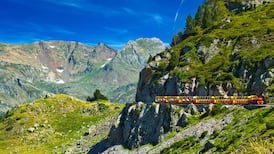Advice on travelling to Camino de Santiago.
Where to stay
Refugio is the generic term for accommodation designed to cater for pilgrims. Overnight fees range from a discretionary donation to €3-10.
Refugios run by religious (or religiously motivated) people tend to be spartan. They are invariably clean and welcoming, but don't expect luxury.
Privately run refugios, known as albergues, tend to be a little more comfortable and are often, but not always, linked to a cafe or small restaurant offering a special pilgrim's evening meal, usually for €8. Sleeping is almost always in dormitories with bunk beds.
Refugios in convents or monasteries generally segregate the sexes; albergues don't bother and no one seems to mind.
If you want something better than a refugio, hostels and one- or two-star hotels abound. Room rates are usually about €35 for a room that sleeps two. Creature comforts come, however, at the expense of missing the company of other pilgrims.
To be a pilgrim
You must walk or cycle a minimum of 100km. You may also travel by horse, but you must not use any powered transport. The full Camino (St-Jean-Pied-de-Port to Santiago) is about 800km, but many pilgrims fly to Santiago and take a train east to Sarria, about 110km from Santiago, and walk back. This is achievable in five to six days.
The Camino attracts people of all religions and none. The churches and religious institutions en route are almost invariably connected to the Catholic Church. But the Camino per se does not "belong" to that church, and many of those who help organise or promote aspects of the Camino are religious with a small "r" or simply have a spiritual dimension to their lives.
At the start of your journey, you should obtain a pilgrim passport (or credencial) at your first refugio (you can also obtain one from the Guinness brewery at St James's Gate in Dublin before setting out). You must have the passport stamped at each refugio or albergue at which you stay (many churches and monasteries en route will also stamp your passport). In Santiago, at the pilgrim office beside the cathedral, your passport will be inspected and, if accepted as an accurate reflection of your journey, you will be issued with your Compostela, a certificate of pilgrimage (there's one type of certificate for those whose pilgrimage was undertaken for religious or spiritual reasons, another for those who indicate non-religious reasons). The Compostela is in Latin and entitles the bearer to a reduced stay in purgatory.
When to go
Expect pretty severe heat in July and August - well above 30 degrees most days. June and September can be very hot as well. Spring and autumn are good times - April and May, or October if you want warm weather and fewer walkers.
What to bring
Remember: what you bring, you carry - rotate underwear and shirts by washing and drying at night. Good walking boots (well broken in), sandals or trainers for evening, two pairs of walking socks.
Two T-shirts or lightweight polo shirts, one heavier fleece top. One pair of shorts, one pair jeans, poncho-style rainwear to cover both you and your rucksack.
Sleeping bag and rucksack.
General toiletries, sunblock, blister pads, plasters for small cuts.
Pre-walk training
You need a basic level of fitness to tackle the Camino. Before leaving Ireland you should be able to comfortably walk 10km within about three hours. After a few days on the Camino you will probably become comfortable doing 20km or more a day, starting at about 8am and finishing around 3pm.
Useful websites
www.stjamesirl.com The Irish Society of the Friends of St James.
www.csj.org.uk The Confraternity of St James, a UK-based organisation promoting the Camino.
www.caminodesantiago.me.uk A site calling itself simply the Camino de Santiago de Compostela Pilgrimage.
www.santiago-compostela.net/index.html A site created in 2005 with funding from the Spanish and Galician governments.









